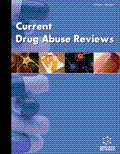Abstract
Constant refinement of opioid dependence (OD) therapies is a condition to promote treatment access and delivery. Among other applications, the partial opioid agonist buprenorphine has been studied to improve evidence-based interventions for the transfer of patients from opioid agonist to antagonist medications. This paper summarizes PubMedsearched clinical investigations and conference papers on the transition from methadone maintenance to buprenorphine and from buprenorphine to naltrexone, discussing challenges and advances. The majority of the 26 studies we examined were uncontrolled investigations. Many small clinical trials have demonstrated the feasibility of in- or outpatient transfer to buprenorphine from low to moderate methadone doses (up to 60-70 mg). Results on the conversion from higher methadone doses, on the other hand, indicate significant withdrawal discomfort, and need for ancillary medications and inpatient treatment. Tapering high methadone doses before the transfer to buprenorphine is not without discomfort and the risk of relapse. The transition buprenorphine-naltrexone has been explored in several pilot studies, and a number of treatment methods to reduce withdrawal intensity warrant further investigation, including the co-administration of buprenorphine and naltrexone. Outpatient transfer protocols using buprenorphine, and direct comparisons with other modalities of transitioning from opioid agonist to antagonist medications are limited. Given its potential salience, the information gathered should be used in larger clinical trials on short and long-term outcomes of opioid agonist-antagonist transition treatments. Future studies should also test new pharmacological mechanisms to help reduce physical dependence, and identify individualized approaches, including the use of pharmacogenetics and long-acting opioid agonist and antagonist formulations.
Keywords: Drug addiction, evidence-based treatment, implant, injection, long-acting, extended release, low-dose, high-dose, methadone, naltrexone, partial agonist, dependence, tolerance, withdrawal, transfer, non-opioid, pharmacogenetics
 31
31















